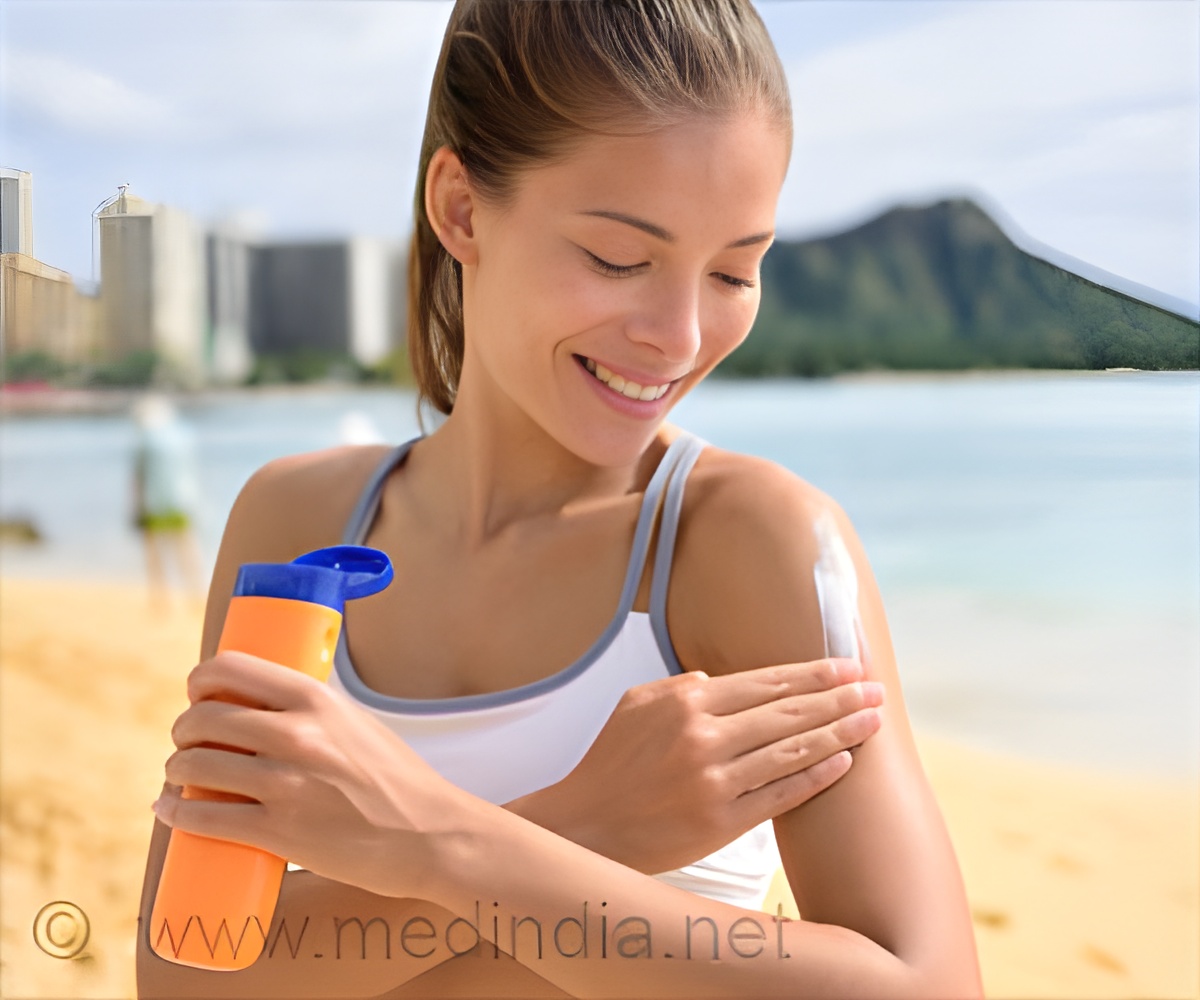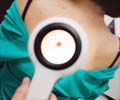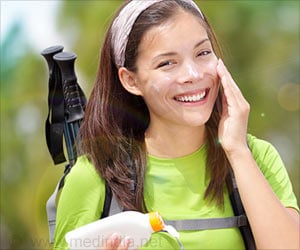Chemical sun protection (sunscreen) shields nitric oxide levels and may help protect against ultraviolet radiation (UVR) exposure and maintain vascular health.

‘Applying sunscreen is essential, especially when exercising or participating in other various outdoor activities as a new study finds that using chemical sun protection may play a protective role against ultraviolet radiation exposure and maintain vascular health.’
Read More..




Nitric oxide is a compound essential for blood vessel health. Vasodilation of the skin's blood vessels plays an important role in regulating body temperature and responding to heat stress, both locally in the skin and throughout the body.Read More..
Researchers from Pennsylvania State University studied the effect of UVR exposure with sunscreen or sweat on nitric oxide's ability to promote vasodilation of skin blood vessels. Healthy young adults with light-to-medium skin tone were exposed to UVR on one arm while the other arm served as a control and did not receive UVR treatment. The dosage of UVR was roughly equivalent of spending an hour outside on a sunny day, but without the reddening of sunburn. Three sites on the UVR-exposed arm of each participant were randomly assigned one of three treatments:
- one site received UVR only,
- a second site received UVR with a chemical sunscreen on the skin, and
- a third site received UVR with simulated sweat on the skin.
The UVR-only site was found to have less nitric oxide-associated vasodilation than in the control arm. However, the sunscreen- and sweat-treated sites did not show these reductions in nitric oxide-associated vasodilation.
"Further, when sunscreen was applied prior to UVR, UVR exposure actually augmented [nitric oxide-associated vasodilation] compared to [the control arm], or when sweat was on the skin," the research team wrote. "The presence of sunscreen or sweat on the skin may play a protective role against this effect [of UVR]."
Advertisement
Source-Eurekalert















